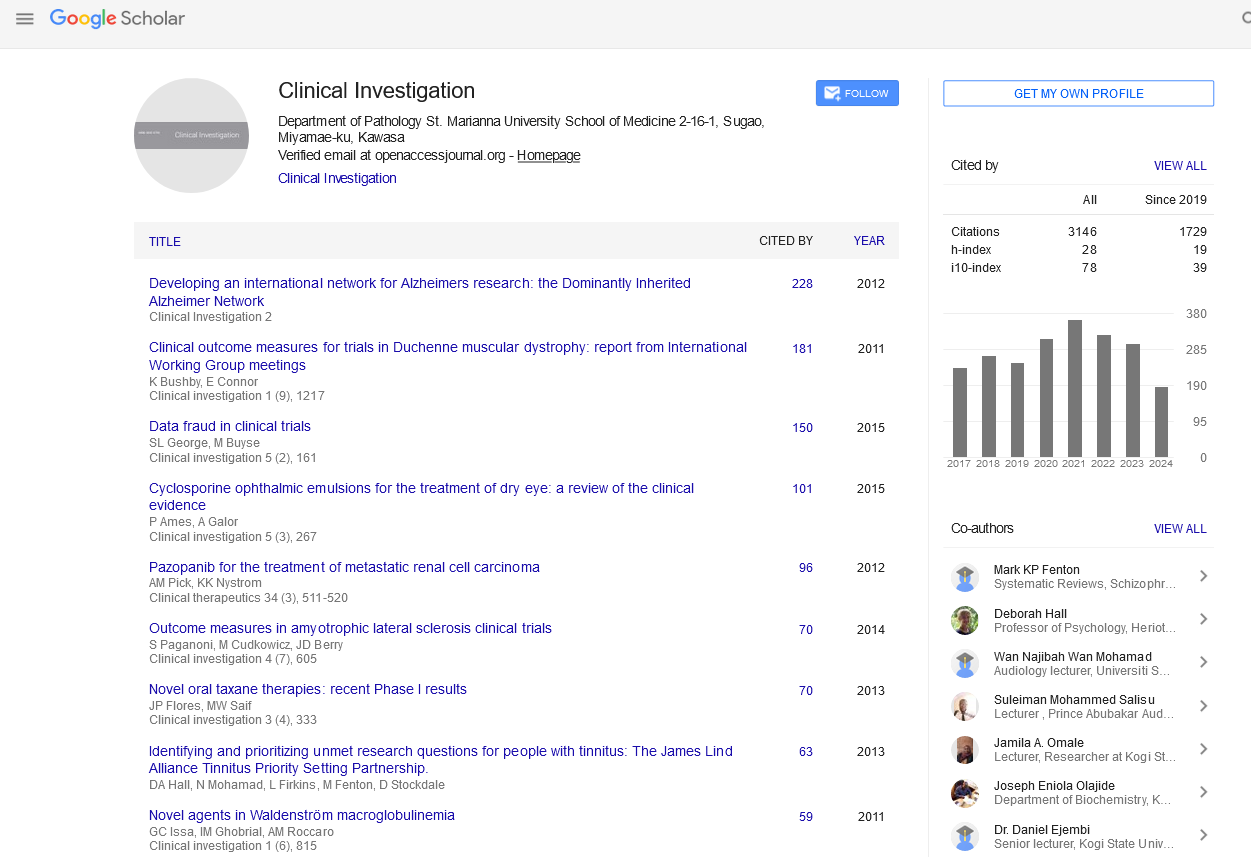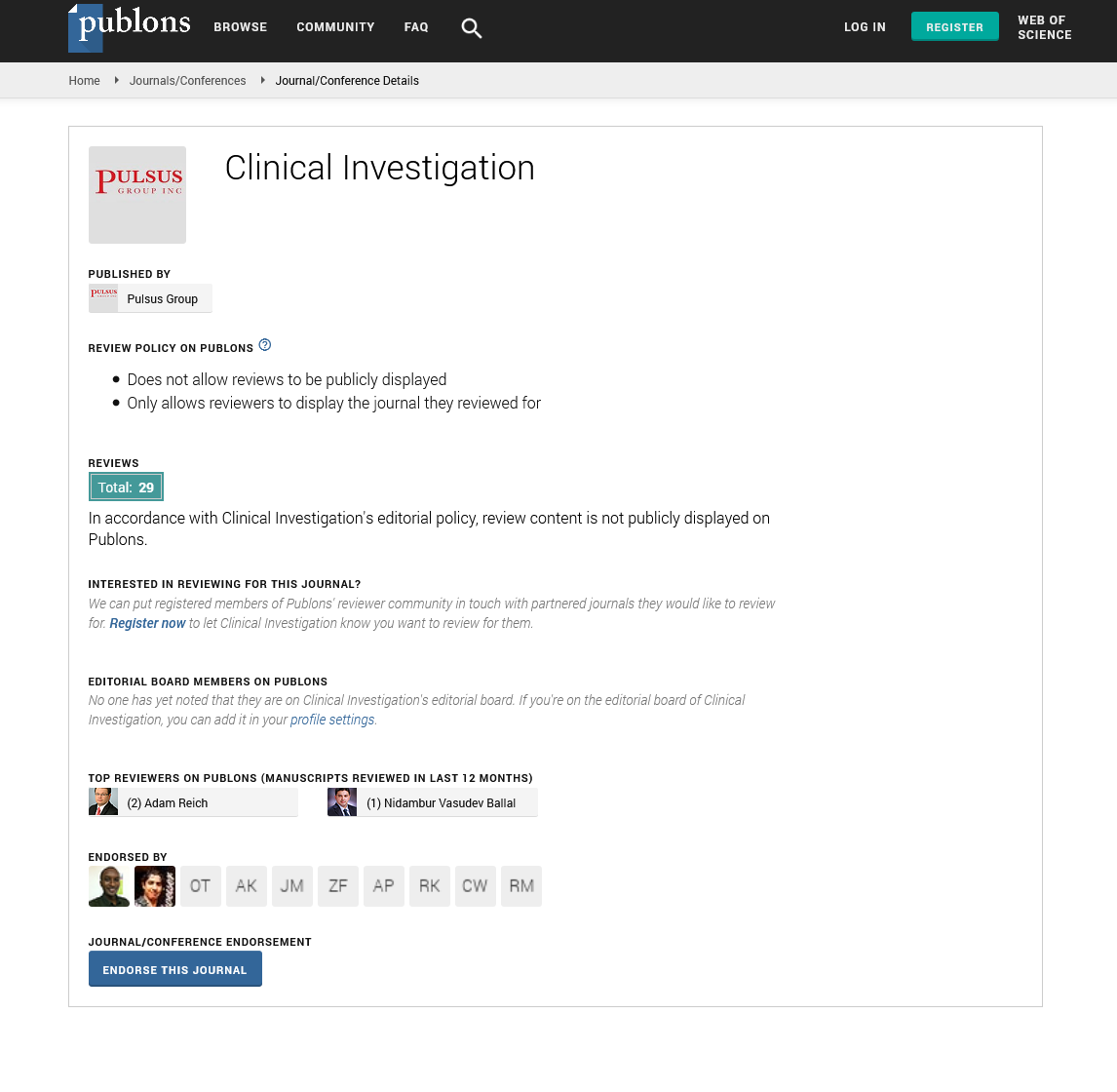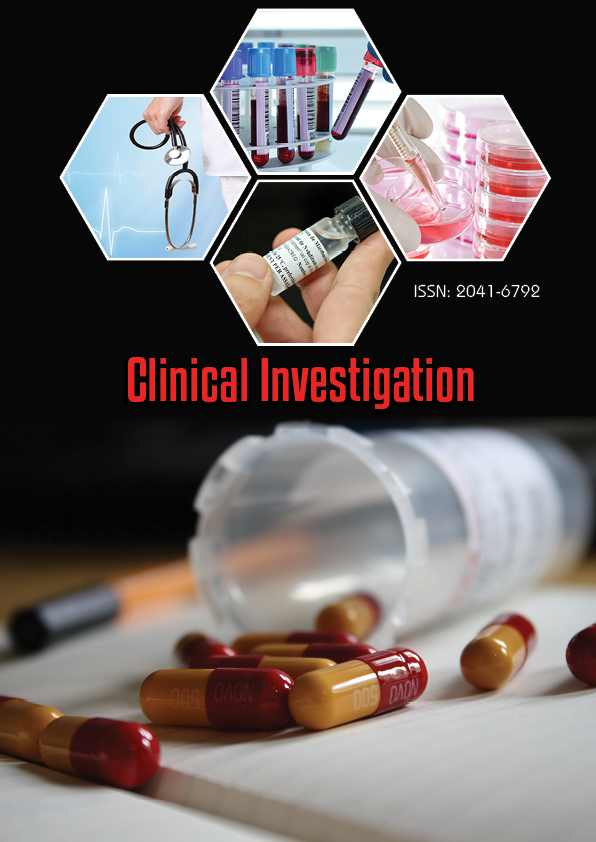Perspective - Clinical Investigation (2024) Volume 14, Issue 4
Bioinstrumentation: Advancing Healthcare Through Precision and Innovation
- Corresponding Author:
- Simone Smith
Faculty of Biology, Federal University, Austria
E-mail:simonesmith@gmail.com
Received: 2-April-2024, Manuscript No. fmci-25-160377; Editor assigned: 4-April-2024, PreQC No fmci-25-160377(PQ); Reviewed: 12-April-2024, QC No. fmci-25-160377; Revised: 20-April-2024, Manuscript No. fmci-25-160377(R); Published: 24-April-2024
Abstract
Bioinstrumentation is a multidisciplinary field that involves the development and application of instruments and devices used to measure, monitor, and manipulate biological systems. These instruments play a crucial role in medical diagnostics, research, and treatment by providing precise data on the physiological, biochemical, and electrical parameters of the human body. The integration of bioengineering, electronics, and medical sciences has led to the creation of various devices that range from simple thermometers to sophisticated imaging technologies like MRI and CT scanners. This article explores the scope of bioinstrumentation, its applications in healthcare, challenges in the field, and the future directions of bioinstrumentation technology. With the rapid advancement of technology, bioinstrumentation continues to be a pivotal tool in improving patient care, enabling early disease detection, and enhancing therapeutic interventions.
Keywords
Bioinstrumentation • Medical devices • Diagnostic tools • Healthcare technology • Biosensors • Biomedical engineering • Medical imaging • Physiological monitoring
Introduction
Bioinstrumentation refers to the use of instruments, devices, and systems for measuring and analyzing biological processes, typically in the context of medical diagnostics, research, and therapeutic applications. It combines principles from electronics, mechanics, materials science, and biology to create tools that interact with biological systems and provide meaningful data. The role of bioinstrumentation in healthcare is invaluable, as it allows clinicians and researchers to gain insights into the functioning of organs, tissues, and cells in real-time, facilitating accurate diagnoses, monitoring of diseases, and management of patient care. From non-invasive sensors that measure blood pressure or glucose levels to complex imaging devices like Magnetic Resonance Imaging (MRI) and Electrocardiography (ECG), bioinstrumentation plays a pivotal role in modern healthcare. The primary goal of bioinstrumentation is to enhance the accuracy and efficiency of medical procedures, improve patient outcomes, and support personalized treatments. This article delves into the core aspects of bioinstrumentation, including the technologies used, key applications, challenges faced by the field, and the exciting future directions that hold promise for the evolution of healthcare.
Applications of bioinstrumentation in healthcare
Bioinstrumentation has found applications across several key areas of healthcare, including diagnostics, monitoring, therapy, and rehabilitation.
• Diagnostic tools: One of the most significant contributions of bioinstrumentation is in medical diagnostics. Diagnostic instruments help detect diseases at an early stage, enabling timely interventions. Common diagnostic tools include:
• Electrocardiography (ECG): ECG is a bioinstrument used to monitor the electrical activity of the heart. It is used to detect arrhythmias, heart attacks, and other cardiac abnormalities.
• Electroencephalography (EEG): EEG is used to monitor brain electrical activity. It is a critical tool for diagnosing neurological conditions such as epilepsy, sleep disorders, and brain tumors.
• Blood glucose monitors: For patients with diabetes, bioinstrumentation includes devices like glucometers that monitor blood glucose levels. These devices are essential for the daily management of diabetes.
• Medical imaging: Medical imaging techniques, which rely heavily on bioinstrumentation, allow healthcare providers to visualize internal structures of the body without the need for invasive procedures. These include:
• Magnetic Resonance Imaging (MRI): MRI uses powerful magnets and radio waves to generate detailed images of soft tissues, helping diagnose conditions in the brain, spine, and organs.
• Computed Tomography (CT) scanning: CT scanners provide cross-sectional images of the body using X-rays, helping detect tumors, fractures, and internal bleeding.
• Ultrasound: This non-invasive imaging technique uses sound waves to produce images of organs, blood vessels, and tissues. It is widely used for monitoring pregnancies, assessing cardiac function, and detecting liver diseases.
• Monitoring devices: Bioinstrumentation also plays a crucial role in continuous monitoring of patients, especially those in critical care settings. These devices help healthcare providers track vital signs in real-time:
• Pulse oximeters: These non-invasive devices monitor blood oxygen levels and heart rate. Pulse oximeters are widely used in emergency rooms, operating rooms, and homecare settings.
• Blood pressure monitors: Automated blood pressure cuffs are vital tools for diagnosing hypertension and tracking patients’ cardiovascular health.
• Wearable health trackers: Wearable devices like smartwatches or fitness bands equipped with bioinstrumentation can monitor heart rate, physical activity, and sleep patterns, enabling users to take proactive steps toward better health.
• Therapeutic devices: Bioinstrumentation is also integral in therapeutic applications, where it supports treatments by delivering specific interventions to the body.
• Pacemakers: These small devices are implanted in patients with irregular heartbeats, delivering electrical impulses to maintain normal heart rhythm.
• Deep Brain Stimulation (DBS): Used for patients with Parkinson’s disease and other movement disorders, DBS involves implanting electrodes in the brain to regulate abnormal brain activity.
• Rehabilitation and prosthetics: Advancements in bioinstrumentation have significantly improved prosthetics and rehabilitation technologies. For example:
• Prosthetic limbs: Modern prosthetics use sensors to detect muscle activity and control the movement of artificial limbs. These advancements have greatly enhanced the functionality and comfort of prosthetic devices.
• Exoskeletons: Exoskeletons, powered by bioinstrumentation, assist individuals with mobility impairments by providing support and enabling movement.
Challenges in bioinstrumentation
While bioinstrumentation has revolutionized healthcare, it also faces several challenges that impact its adoption and effectiveness:
• Accuracy and precision: Medical instruments must provide highly accurate data to ensure proper diagnosis and treatment. However, biological systems are often complex and dynamic, making it difficult to maintain consistent accuracy. The calibration and maintenance of bioinstrumentation devices are critical for ensuring reliable results.
• Miniaturization and portability: Many bioinstrumentation devices are large and stationary, limiting their use in certain clinical settings. The development of smaller, portable devices that provide accurate data has been a major challenge. However, there has been significant progress in creating compact devices, such as portable ECG monitors and handheld ultrasound devices.
• Biocompatibility: For bioinstrumentation devices that are implanted in the body, such as pacemakers or prosthetics, biocompatibility is a significant concern. These devices must not trigger immune responses or cause adverse reactions within the body. Extensive research is required to develop materials and technologies that are safe and long-lasting.
• Data security and privacy: With the increasing use of connected bioinstrumentation devices, there is a growing concern about the security and privacy of patient data. Ensuring that medical devices comply with stringent regulations and safeguard sensitive health information is a challenge that the healthcare industry must address.
• Cost and accessibility: The cost of advanced bioinstrumentation can be prohibitive, especially in developing countries or low-resource settings. Widespread adoption of these technologies requires efforts to reduce costs and make them more accessible to all populations.
Future directions in bioinstrumentation
The future of bioinstrumentation holds significant promise, driven by advances in technology, materials science, and biomedical engineering. Some of the key developments include
• Wearable and implantable devices: Future bioinstrumentation will likely see an increase in wearable and implantable devices that provide continuous health monitoring. These devices will not only track vital signs but also offer predictive insights into an individual’s health, enabling early detection of diseases like heart disease, diabetes, and neurological disorders.
• Point-of-care diagnostics: Portable diagnostic tools that allow for pointof-care testing are expected to become more widespread. These devices will enable healthcare providers to diagnose conditions in real-time, improving the speed and efficiency of medical interventions.
• Artificial intelligence and machine learning: The integration of Artificial Intelligence (AI) and Machine Learning (ML) with bioinstrumentation has the potential to revolutionize healthcare. AI algorithms can help interpret data from medical devices, identify patterns, and even predict disease progression, leading to more personalized and effective treatments.
Conclusion
Bioinstrumentation is an essential aspect of modern healthcare, facilitating the diagnosis, treatment, and monitoring of a wide range of medical conditions. It bridges the gap between engineering and medicine, enabling healthcare professionals to make informed decisions and deliver effective care. From diagnostic imaging devices to wearable health trackers, bioinstrumentation has a profound impact on patient outcomes and quality of life.
As technology continues to advance, bioinstrumentation will evolve further, becoming more integrated, personalized, and accessible. With ongoing innovation, bioinstrumentation is poised to improve not only the efficiency and precision of healthcare delivery but also its affordability and accessibility, ultimately benefiting patients worldwide.


